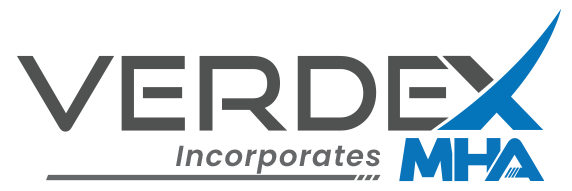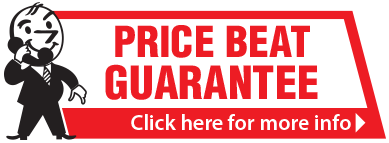Importance of Spill Kits in Workplace Safety
Date Posted:18 September 2024
Spill kits are a vital part of any workplace that handles liquids, chemicals, or other hazardous materials.
Spill kits are an essential component of workplace safety, especially in environments where hazardous materials, chemicals, or large quantities of liquids are handled regularly. These kits are designed to contain and clean up spills quickly and efficiently, minimising the risk of injury, environmental damage, and costly downtime. Understanding the importance of spill kits and how to use them effectively is crucial for maintaining a safe and compliant workplace.
Why Spill Kits are necessary?
In many industries, the handling of liquids, oils, chemicals, and other hazardous substances is a daily occurrence. Accidental spills can happen at any time, and without proper preparation, they can lead to serious consequences. Spill kits provide a ready solution to these incidents, enabling workers to respond immediately and effectively.
- Preventing Accidents and Injuries: Spills, especially of hazardous substances, can create slippery surfaces, leading to slips, trips, and falls. In more serious cases, contact with the spilled material can cause chemical burns, respiratory issues, or other health hazards. Spill kits contain the necessary tools to quickly clean up spills and reduce the risk of injury.
- Environmental Protection: Spills can have a significant impact on the environment, particularly if hazardous substances are involved. Contaminated water sources, soil, and air can result from improper spill management. Spill kits are equipped with absorbents and containment materials that help prevent the spread of hazardous substances, protecting the environment from contamination.
- Compliance with Regulations: Many industries are subject to strict regulations regarding the handling and disposal of hazardous materials. Having spill kits on hand and training staff in their use is often a requirement for compliance. Failure to comply can result in fines, legal action, and damage to a company’s reputation.
Components of a Spill Kit
Spill kits come in various types, each designed to handle specific kinds of spills. However, most spill kits contain some common components that are essential for effective spill response.
- Absorbent Materials: These include pads, pillows, and rolls made from materials that can absorb liquids, oils, or chemicals. Absorbents are the primary tool for soaking up the spilled substance and preventing it from spreading.
- Containment Booms or Socks: These are used to encircle a spill, preventing it from spreading further. They are particularly useful for larger spills or spills near drains, where the substance could enter the water system.
- Personal Protective Equipment (PPE): Spill kits often include gloves, goggles, and other protective gear to ensure that workers can handle the spill safely without risking exposure to hazardous substances.
- Disposal Bags and Containers: After cleaning up a spill, the contaminated absorbents and other materials must be disposed of properly. Spill kits usually include disposal bags and containers designed to safely store these items until they can be disposed of according to regulations.
- Instruction Manual: Many spill kits come with an instruction manual or quick guide that outlines the steps for effectively using the kit. This is especially important for ensuring that even untrained workers can respond appropriately in an emergency.
Types of Spill Kits
There are different types of spill kits, each designed for specific kinds of spills. Selecting the right spill kit for your workplace depends on the types of materials you handle.
- General Purpose Spill Kits: These are versatile kits that can handle a variety of non-hazardous liquids, making them ideal for general industrial use.
- Oil Spill Kits: These are designed specifically for absorbing oil-based liquids while repelling water. They are commonly used in automotive, marine, and manufacturing industries.
- Chemical Spill Kits: These kits are equipped with absorbents and protective gear specifically designed to handle hazardous chemicals. They are essential in laboratories, chemical plants, and other environments where dangerous substances are used.
Best Practices for using Spill Kits
To ensure the effectiveness of spill kits in your workplace, it's important to follow some best practices.
- Training: Ensure that all employees are trained in the use of spill kits. This includes knowing the location of the kits, understanding the types of spills they are designed for, and following the correct procedures for using them.
- Regular Inspections: Conduct regular inspections of spill kits to ensure that they are fully stocked and that none of the components have expired or been used without replacement.
- Immediate Response: In the event of a spill, it’s crucial to respond immediately. Delaying the use of a spill kit can result in the spill spreading, increasing the risk of injury or environmental damage.
Spill kits are a vital part of any workplace that handles liquids, chemicals, or other hazardous materials. By providing the tools necessary for a quick and effective response to spills, these kits help protect workers, the environment, and the business itself. Ensuring that spill kits are available, properly maintained, and that staff are trained in their use is key to maintaining a safe and compliant workplace.




























































































































 Trolleys & Hand Trucks
Trolleys & Hand Trucks Cage Trolleys
Cage Trolleys Cleaning Carts & Trolleys
Cleaning Carts & Trolleys Construction Trolleys
Construction Trolleys Hand Trucks & Dollies
Hand Trucks & Dollies Laundry/Linen Trolleys
Laundry/Linen Trolleys Lifting Trolleys
Lifting Trolleys Order Picking Trolleys
Order Picking Trolleys Panel Cart Trolleys
Panel Cart Trolleys Platform Trolleys
Platform Trolleys Powered Trolleys
Powered Trolleys Shelf & Tiered Trolleys
Shelf & Tiered Trolleys Stainless Steel Trolleys
Stainless Steel Trolleys Tool Trolleys
Tool Trolleys Utility & Service Carts
Utility & Service Carts Lifting & Handling Equipment
Lifting & Handling Equipment Forklift Attachments
Forklift Attachments Jib Attachments
Jib Attachments Lifting Hoists & Pallet Hooks
Lifting Hoists & Pallet Hooks Load Skates & Tow Tugs
Load Skates & Tow Tugs Manual Stackers & Lifters
Manual Stackers & Lifters Pallet Jacks
Pallet Jacks Pallet Lifters
Pallet Lifters Pallet Rotators & Dispenser
Pallet Rotators & Dispenser Powered Pallet Trucks & Electric Lifters
Powered Pallet Trucks & Electric Lifters Scissor Lift Trolleys and Tables
Scissor Lift Trolleys and Tables Conveyor Equipment
Conveyor Equipment Conveyor Frames & Stands
Conveyor Frames & Stands Roller & Skate Conveyors
Roller & Skate Conveyors Ladders & Access Equipment
Ladders & Access Equipment Container & Yard Ramps
Container & Yard Ramps Ladders & Step Stools
Ladders & Step Stools Work Platforms & Crane Cages
Work Platforms & Crane Cages Drum Handling Equipment
Drum Handling Equipment Drum Storage & Bunding
Drum Storage & Bunding Drum Trolleys & Lifters
Drum Trolleys & Lifters Forklift Drum Handling
Forklift Drum Handling Dangerous Goods Storage & Spillage
Dangerous Goods Storage & Spillage Aerosol Cans Storage Cages
Aerosol Cans Storage Cages Bunded Pallets & Storage
Bunded Pallets & Storage Corrosive Goods Storage Cabinets
Corrosive Goods Storage Cabinets DG Storage & Trolleys
DG Storage & Trolleys Flammable Liquid Cabinets
Flammable Liquid Cabinets Forklift Gas Storage Cages
Forklift Gas Storage Cages Site Storage
Site Storage Spill Kits
Spill Kits Waste Handling & Bins
Waste Handling & Bins Bin Lifters & Tippers
Bin Lifters & Tippers Plastic Waste & Wheelie Bins
Plastic Waste & Wheelie Bins Steel Waste & Tipping Bins
Steel Waste & Tipping Bins Waste Carts
Waste Carts Shelving & Storage Equipment
Shelving & Storage Equipment Heavy Duty Cabinets
Heavy Duty Cabinets Heavy Duty Shelving
Heavy Duty Shelving Mega Bins & Pallets
Mega Bins & Pallets Packing & Workbenches
Packing & Workbenches Pallet Racking Accessories
Pallet Racking Accessories Parts Trays & Stor-Pak Bins
Parts Trays & Stor-Pak Bins Pegboard & Louvre Panels
Pegboard & Louvre Panels Plastic Bins & Crates
Plastic Bins & Crates Plastic Handling Solutions Bins
Plastic Handling Solutions Bins Plastic Pallets
Plastic Pallets Stack & Nest Bins
Stack & Nest Bins Stillage & Transport Cages
Stillage & Transport Cages Workplace Equipment
Workplace Equipment Modular Workbenches
Modular Workbenches Electric Height-Adjustable Workbenches
Electric Height-Adjustable Workbenches Floor Matting
Floor Matting General Workplace Equipment
General Workplace Equipment Industrial Weighing Scales
Industrial Weighing Scales Packaging Machinery
Packaging Machinery Stationery Cupboards
Stationery Cupboards Storage and Stillage Cages
Storage and Stillage Cages Tool Trolleys
Tool Trolleys Tooling Cabinets
Tooling Cabinets Safety Barriers, PPE & Signage
Safety Barriers, PPE & Signage Barriers & Bollards
Barriers & Bollards First Aid Equipment
First Aid Equipment Gloves, Knives and PPE
Gloves, Knives and PPE Signage
Signage Cleaning & Site Supplies
Cleaning & Site Supplies Cleaning Equipment
Cleaning Equipment Cleaning Trolleys
Cleaning Trolleys Rubbish Bins
Rubbish Bins Signs & Traffic Supplies
Signs & Traffic Supplies Construction Equipment
Construction Equipment Construction Trolleys
Construction Trolleys Waste Handling
Waste Handling General Site Equipment
General Site Equipment Concrete Equipment
Concrete Equipment Site Storage
Site Storage Lifting Equipment
Lifting Equipment Verdex Specials
Verdex Specials











